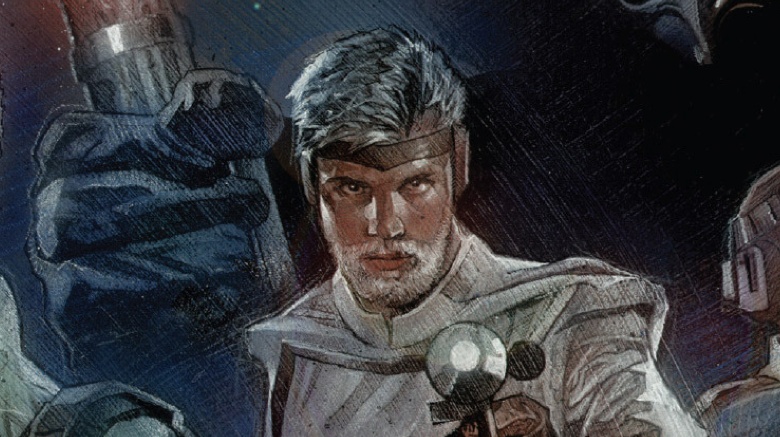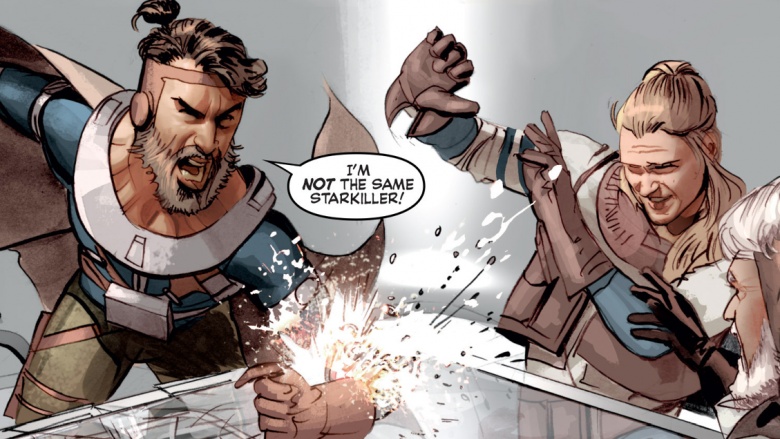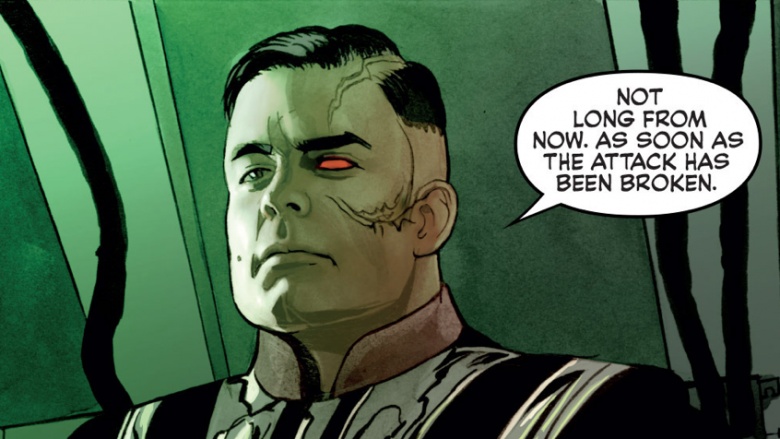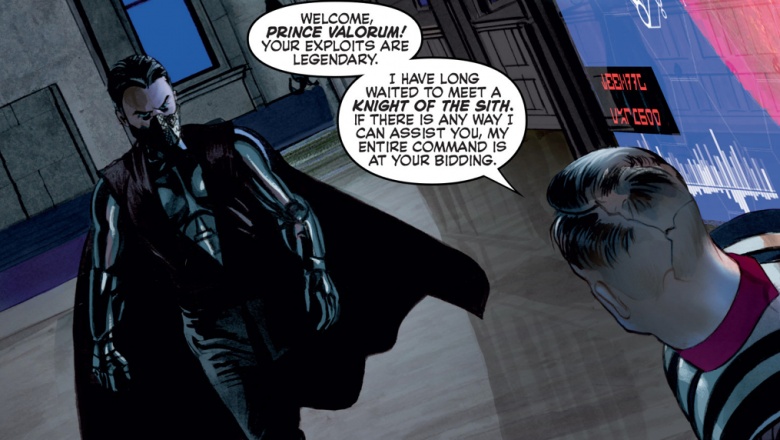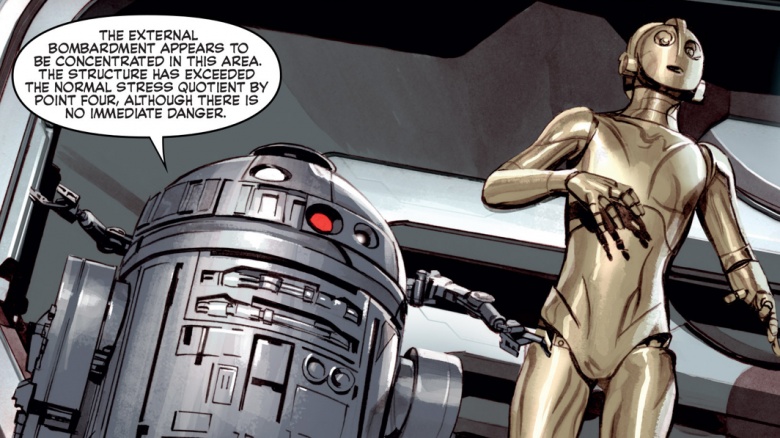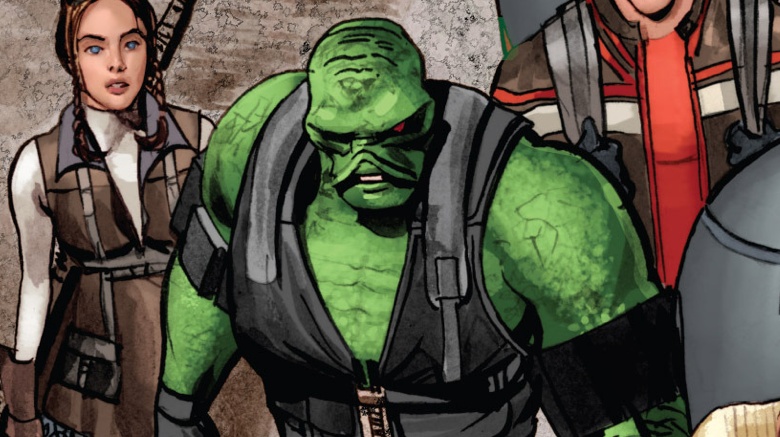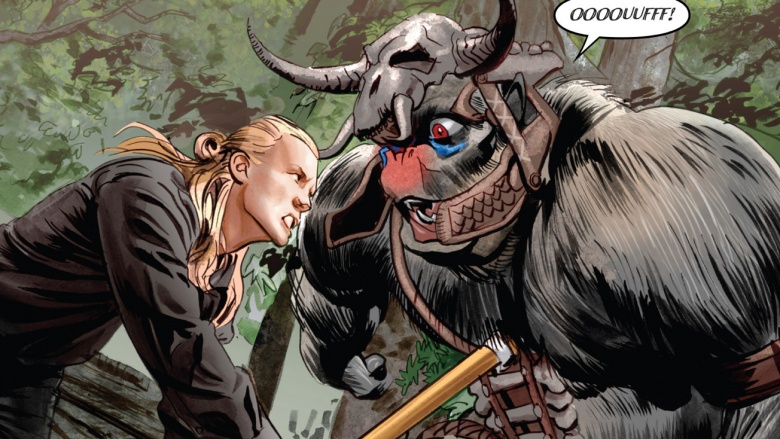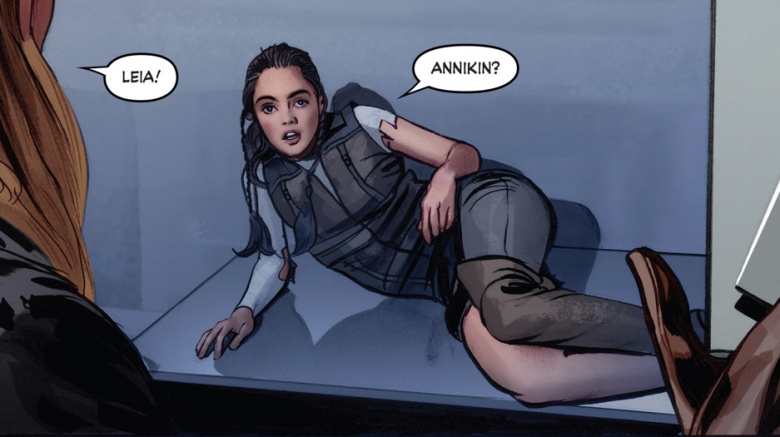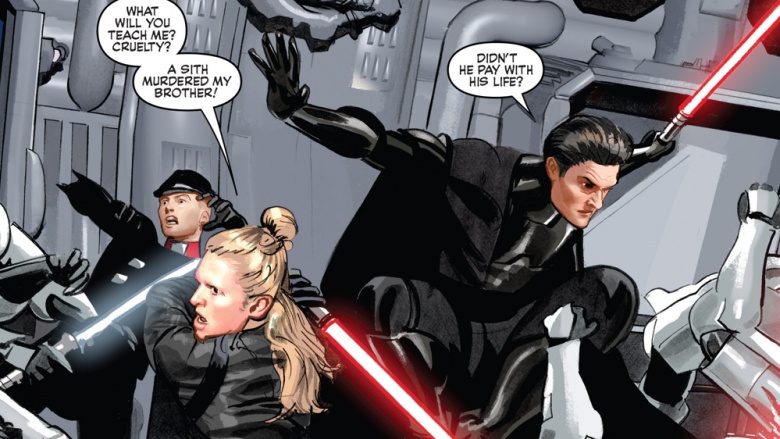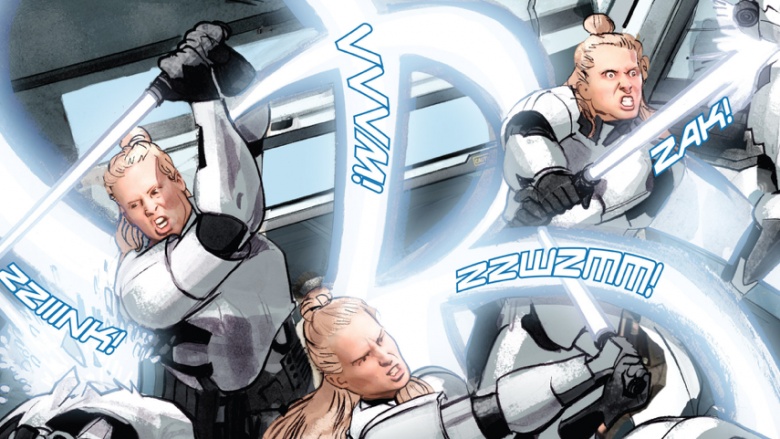The Star Wars That Almost Was
During the early 1970s, a young George Lucas toiled away writing the script outline for a sci-fi/fantasy space opera he'd tentatively titled The Star Wars. By 1974, he had a pretty solid screenplay, with trained knights using laser swords, an evil Empire, and an enormous fortress in space—except this Star Wars was almost nothing like the films we know and love today. In 2013, Dark Horse Comics released an illustrated version of Lucas' original screenplay, and we got to see how Lucas' original vision evolved into what we finally saw on screen. For hardcore Star Wars fans, some of the differences are staggering.
Luke Skywalker is an Old Man
In The Star Wars, Luke Skywalker is a grizzled older man of 60 and a general on Aquilae, which is one of the few planets not already taken over by the Empire. He's a Jedi-Bendu, a group of warriors who were once the sworn defenders of the Emperor but have since defected and are being hunted by the Sith. As in A New Hope, very few Jedi are left, and their numbers are dwindling. The Force isn't a mystical, universal energy in this version, but saying "May the force of others be with you" is pretty much the "keep it real" or "smell you later" of the universe.
Kane and Annikin Starkiller
The roles of our heroes shift around a bit in this first draft. Kane Starkiller is also a Jedi-Bendu, and he lives on a desolate moon with his two sons, Deak and Annikin. Kane is mostly cyborg now, after his many battles left him with nothing but a head and an arm. After young Deak is killed by a surprise Sith attack, Kane and Annikin flee to Aquilae so that the brash Annikin can complete his Jedi-Bendu training with Luke. Shades of Anakin Skywalker's attitude from Attack of the Clones are very apparent here, but instead of the Jedi braid, Annikin sports a mullet/man bun combo.
Darth Vader Lite
The man known only as Darth Vader is still imposing in The Star Wars, but he's a lot better-looking. While he bears some the scars of the Vader we already know, he has one robotic, red eye and a full head of hair. In this version, he's a tactical commander of the Empire, and has no special powers. While he expresses some respect for the Sith, it quickly diminishes when they don't get instant results. This Vader occasionally wears the trademark helmet, but only the top part, since he's not a human dehumidifier just yet.
Prince Valorum
The name Valorum pops up in the prequel trilogy, but in a completely different context. In The Star Wars, Prince Valorum is a powerful Sith who is called in by the Empire for his Jedi-Bendu hunting expertise. He doesn't immediately capture the rebellious Skywalker and Starkiller, nor Leia and her siblings, but it's clear that the Darth Vader we get in A New Hope is an amalgamation of both this Vader and Valorum, neither of whom really serve a huge purpose here except to bicker about who's cooler.
R2-D2 Can Talk
He only speaks with bleeps and blips in the Original Trilogy, but it's apparent that R2-D2 is a sassmouth. In The Star Wars, he speaks in full sentences, even though he still looks like a trash can. It's interesting to note that Lucas originally planned full dialogue for the little droid—and equally interesting that C-3PO hasn't changed in personality from his very first appearances. It's a bit comforting to know that at least one thing was fixed in stone from Lucas' conception of Star Wars...even if it is an effete, frustrating robot.
Swamp Solo
The most dramatic change from The Star Wars to Star Wars is the appearance of Han Solo. While he remains a morally ambiguous scamp, he's also an enormous green-gilled creature from a species known for killing Wookiees, making his eventual partnership with Chewbacca all but impossible in these early drafts. Even under his scaly skin, though, Solo seems like pretty much the same guy.
Wookiee Madness
Wookiees have basically replaced Ewoks in these early versions. They're still 8-foot-tall killing machines, but they're also very superstitious and depicted as living in a society that looks a lot like the Ewoks' village on Endor in Return of the Jedi. Annikin Starkiller beats their chief in combat and is subsequently worshipped, attaining a position similar to C-3PO's comical god status in Return of the Jedi. Our only semi-canonical knowledge of Wookiee society comes from the Star Wars Holiday Special, but this seems pretty spot on.
Leia's College Years
Princess Leia doesn't play the heroic role she assumes in A New Hope, but is instead a college girl who needs to be rescued from her university once war on Aquilae breaks out. She's retrieved by Annikin Starkiller, who punches her in the face to get her to comply, and they eventually fall in love for reasons not even the script can explain. When Leia's father is killed, she becomes the queen of Aquilae, and it's decided that in order to control the planet and their cloning technology, the Empire needs to capture her and her siblings.
Sith and Jedi Team-Up
By the end of the script, Sith Prince Valorum and Jedi-Bendu Annikin Starkiller team up to deal a blow to the Empire, once Valorum has realized that Vader is a total jerk and probably wants to wipe out the Sith as well. Interestingly, Valorum chides Annikin for his love of Leia, and states that these emotions are the difference between the Jedi and Sith. This is the inverse of the beliefs we learn about the two factions later: Jedi shun emotion, and Sith embrace it to make them more powerful.
Finale
Ultimately, after the Jedi teach the Wookiees how to fly ships, the Death Star fortress explodes with Vader inside, Aquilae is saved, and Annikin Starkiller is given the job of being the chief protector of Aquilae, which hopefully comes with an insane pay raise. For better and for worse, many of the ideas in Lucas' original script were saved and inserted into the six Star Wars films, but we're relieved that some fell permanently by the wayside. Han Solo would have made a terrible Black Lagoon creature.

